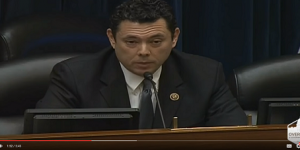Ann Coulter tears apart the emerging media myth of a “forgiving” approach to the heroin epidemic sweeping the country and ties it directly to the source: the porous Southern Border where smuggling drugs has become incredibly easy.
If the Times had any genuine interest in reducing drug addiction, I suspect the paper would prefer the “stigmatizing” approach. It might even advocate policies to stop drug addiction, rather than policies to treat it.
As Rangel said in a 1992 speech to the National Press Club: “We all know that the availability of heroin and cocaine on our streets is because our borders are a sieve. I would like to believe that if the communists were still alive and well, and they were pushing bombs into communities that could cause the havoc, the pain and the cost that drugs are, that somehow the secretary of state … would be involved.”
Rangel is right. The drug problem exploded in the U.S. after we opened our southern border to one of the world’s major drug-supplying countries: Mexico. The vast majority of all drugs in America — heroin, cocaine, marijuana and, increasingly, methamphetamine — are brought in by the people of Mexico, who make our country a more diverse tapestry of cultural richness.
It’s no accident that hard drug use is exploding:
In 2010, 38,329 people died from drug overdoses, twice the number a decade earlier. More people died of drug overdoses than from automobile accidents (30,196), murders (13,000) or gun accidents (700).
About 90 percent of heroin in the U.S. is brought in by Mexicans. In 2013, U.S. authorities seized 2,162 kilograms of heroin coming across our southern border — compared to 367 kilos in 2007. The government has estimated that 660,000 Americans are using heroin and more than 3,000 are dying of it every year — because Mexico is boosting the supply.
And yet in a major front-page article about America’s “heroin crisis” last weekend, the Times never mentioned Mexico.
Even when Mexicans dump illegal drugs on our country, it’s America’s fault. As the Times explained in an Aug. 30, 2015, article, Mexico increased opium production by 50 percent in 2014, “the result of a voracious American appetite.”
In what other circumstances do we absolve the seller of a dangerous product because a buyer exists? It’s not the hit-man’s fault — that lady wanted her husband dead.
It’s not only the open Southern Border allows drugs to freely flow into the U.S. but the workforce to sell the drugs also saunters across and sets up shop:
In any event, the “appetite” argument may work for pot, but America did not place an order for black tar heroin. According to a DEA agent quoted in The Washington Post, Mexican drug pushers stand outside American methadone clinics, selling their wares. Hey, senor, have you heard of this?
Despite the Times’ neurotic obsession with the racial breakdown of heroin users, it seems sublimely uninterested in the ethnic composition of heroin pushers. This is more than the left’s usual affection for criminals.
Contrary to the cliches, most drug dealers aren’t black: They’re Hispanic. In 2013, 48 percent of drug offenders in federal prison were Hispanic. Only 27 percent were black and 22 percent white.
All the left’s blather about drug laws being used to lock up “black bodies” is a lie. Once again, the left is using African-Americans as a false flag to push policies that help Democrats, but hurt black people.
The Times doesn’t mind black neighborhoods being seized by Mexican drug cartels. It doesn’t mind if more white people die from heroin overdoses. The Times just wants to increase the number of Hispanics out of prison, on their way to citizenship, so they can start voting for the Democrats.




























